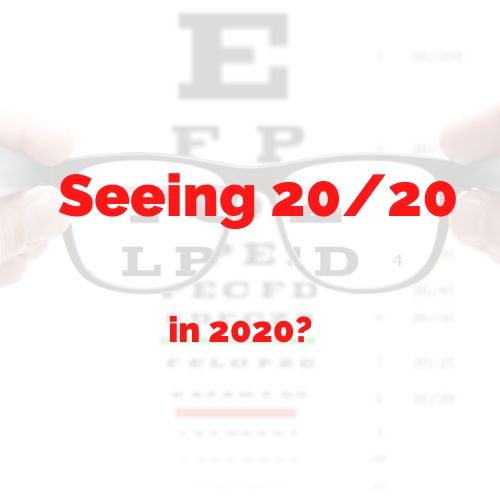Seeing 20/20 for 2020


Is your visual acuity 20/20 in 2020?
20/20 vision is considered normal visual acuity. Corrected visual acuity, the most meaningful measurement, means the measurement of your vision with glasses and/or contact lenses.
Uncorrected visual acuity (sans glasses/contacts) doesn’t really provide us with much useful information.
Visual acuity is a measurement of the “sharpness” or clarity of your vision. Other components of “vision” include depth perception, color vision and peripheral vision (aka side vision).
What Does 20/20 Mean?
The standard distance for measuring visual acuity is 20 feet.
A person who has “normal” acuity is able to see the 20/20 line on the chart standing 20 feet away. In other words, a patient with 20/20 vision does not have to get any closer to the chart compared to other patients with “normal” vision.
A person with 20/100 visual acuity must stand closer to the chart. For example, if I have 20/100 vision, I must stand at 20 feet to see what “normal” sighted individuals can read at 100 feet away.
Conversely, if I have 20/15 vision (better than 20/20), I can stand at 20 feet while someone with 20/20 vision must be 15 feet from the chart (closer).
Decreased Visual Acuity
20/20 vision requires a normal cornea, lens, macula and optic nerve. Different diseases which affect these areas can reduce the visual acuity. For example, a cataract can cause decreased visual acuity as the once normally clear lens becomes cloudy.
Macular degeneration and diabetic retinopahty can both affect the macula. Visual acuity is reduced as the macula is not healthy enough to function at the 20/20 range.
Glaucoma initially affects the peripheral vision. While advance glaucoma can affect central vision, most patients with glaucoma have a normal visual acuity, but compromised visual fields.
Glaucoma is an example where “normal” visual acuity does NOT mean an absence of disease.
Best Corrected Vision
During a comprehensive eye examination, your visual acuity will be measured. You may also be refracted to determine if lenses can enhance your vision.
Your doctor wants to obtain your “best corrected vision” using the best lenses to sharpen your vision as much as possible.
If your vision can not be improved to 20/20 your eye doctor will start to look for reasons why your vision is impaired looking for problems in the cornea, lens, macula and optic nerve.
